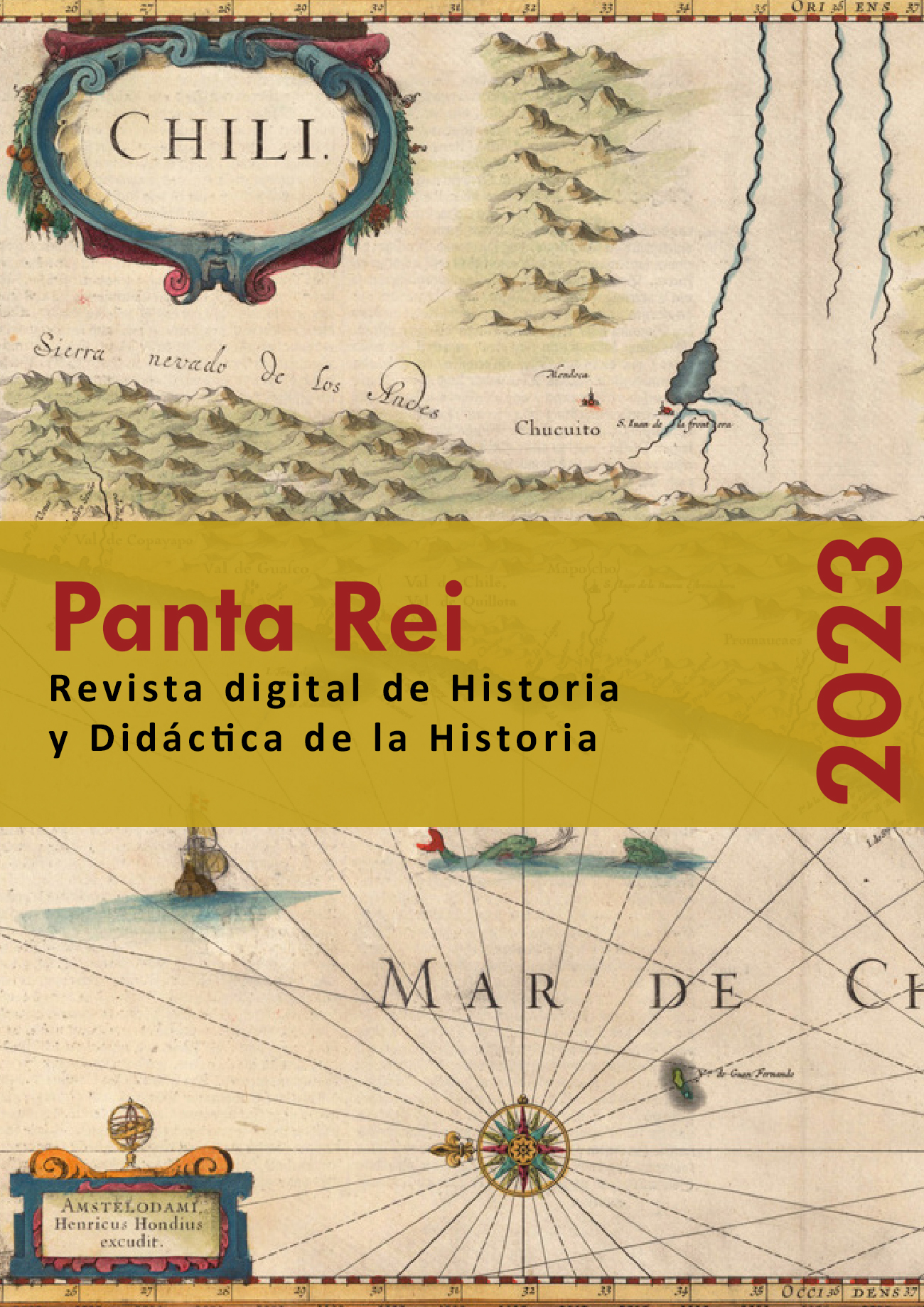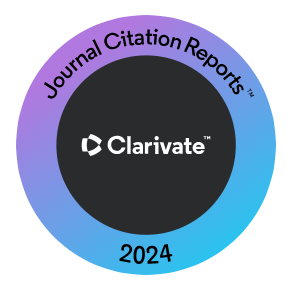The Operational Chain of Funerary Workshops in Roman Egypt. Preparing the Decoration of the Shrouds
Abstract
The operational chain of funerary workshops in Roman Egypt, as far as the production of Osirian burial assemblages is concerned, has been an elusive subject for researchers due to the general scarcity of the textual sources on the subject. However, the meticulous study of the materials manufactured in these places (which have survived) is providing new data that allow us to gain access to the daily life of the artisans/artists dedicated to making coffins or shrouds for the deceased. The present work analyses the painted shrouds that came from these workshops, reconstructing their work in terms of the preparation of the fabrics as a step prior to their decoration. The initial phase of the operational chain is better understood, opening up new perspectives of research into the economic and technical history of Roman Egypt.
Downloads
-
Abstract580
-
PDF (Español (España))352
-
EPUB (Español (España))158
References
Abdalla, A. (1988). A group of Osiris-cloths of the Twenty-First Dynasty in the Cairo Museum. Journal of Egyptian Archaeology, 74, 157-164.
Assmann, J. (2005). Death and salvation in ancient Egypt. Cornell University Press.
Aubert, M.-Fr. (2008). Portraits sur linceul. En M.-Fr. Aubert, R. Cortopassi, G. Nachtergael, V. Asensi Amoros, P. Détienne, S. Pagès-Camagna y A. S. Le Hô, Portraits funéraires de l’Égypte romaine: Cartonnages, linceuls et bois (pp. 127-227). Réunion des musées nationaux.
Aubert, M.-Fr., Cortopassi, R., Nachtergael, G., Asensi Amoros, V., Détienne, P., Pagès-Camagna, S. y Le Hô, A. S. (2008). Portraits funéraires de l’Égypte romaine: Cartonnages, linceuls et bois. Réunion des musées nationaux.
Backes, B. (2001a). Rituelle Wirklichkeit: über Erscheinung und Wirkungsbereich des Webergottes Hedjhotep und den gedanklichen Umgang mit einer Gottes-Konzeption im Alten Ägypten. Rites égyptiens, 9. Brepols.
Backes, B. (2001b). Von nun an sollt ihr Rḥ.tỉ heißen: die „Beiden Kolleginnen“ von Sais. Göttinger Miszellen, 180, 23-28.
Borg, B. (1996). Mumienporträts: Chronologie und kultureller Kontext. Philipp von Zabern.
Bresciani, E. (1996). Il volto di Osiri: tele funerarie dipinte dell’Egitto romano. Maria Pacini Fazzi.
Cannata, M,. (2020). Three hundred years of death: the Egyptian funerary industry in the Ptolemaic Period. Culture and History of the Ancient Near East 110. Brill.
Corcoran, L. H. (1995). Portrait mummies from Roman Egypt (I-IV Centuries AD): with a catalog of portrait mummies in Egyptian museums. University of Chicago Press.
Corcoran, L. H. y Svoboda, M. (2010). Herakleides: a portrait mummy from Roman Egypt. J. Paul Getty Museum.
Cortese, V. (1998). 77. Telo dipinto. En A. M. Donadoni Roveri y F. Tiradritti (eds.), Kemet alle Sorgenti del Tempo (pp. 168-169). Electa.
Dodson, A. y Ikram, S. (2008). The tomb in ancient Egypt: royal and private sepulchres from the Early Dynastic Period to the Romans. Thames & Hudson.
Doxiadis, E. (1995). The mysterious Fayum portraits: faces from ancient Egypt. Thames & Hudson.
Doxiadis, E. (1997). Technique. En S. Walker y M. Bierbrier (eds.), Ancient faces: mummy portraits from Roman Egypt (pp. 21-22). British Museum Press.
Dunand, Fr. y Lichtenberg, R. (1995). Pratiques et croyances funéraires en Egypte romaine. En W. Haase (ed.), Aufstieg und Niedergang der Römischen Welt (ANRW). Geschichte und Kultur Roms im Spiegel der aktuellen Forschung / Rise and decline of the Roman world. Teil 2: Principat. Band 18: Religion. 5. Teilband: Heidentum (die religiösen Verhältnisse in den Provinzen [Forts.]) (pp. 3216-3315). De Gruyter.
García González, D., Ortiz-García, J., Herrerín, J. y Rodríguez Frade, P. (2020). Early Roman Osiris shrouds from Dra Abu el-Naga. Bulletin de l’Institut Français d’Archéologie Orientale, 120, 221-252.
Germer, R. (1992). Die Textilfärberei und die Verwendung gefärbter Textilien im Alten Ägypten. Ägyptologische Abhandlungen, 53. Harrassowitz.
Gessler-Löhr, B. (2012). Mummies and mummification. En Chr. Riggs (ed.), The Oxford handbook of Roman Egypt (pp. 664-683). Oxford University Press.
Goyon, J.-Cl. (1972). Rituels funéraires de l’ancienne Égypte: le rituel de l’Embaumement; le rituel de l’Ouverture de la Bouche; les Livres des Respirations. Éditions du Cerf.
Griffiths, J. G. (1972). The symbolism of red in Egyptian religion. En J. Bergman, K. Drynjeff y H. Ringgren (eds), Ex orbe religionum: studia Geo Widengren, XXIV mense apr. MCMLXXII quo die lustra tredecim feliciter explevit oblata ab collegis, discipulis, amicis, collegae magistro amico congratulantibus (Vol. 1) (pp. 81-90). Brill.
Grimm, G. (1974). Die römischen Mumienmasken aus Ägypten. Franz Steiner.
Helmbold-Doyé, J. (2017). Mumientuch einer Frau. En J. Helmbold-Doyé y T. L. Gertzen (eds.), Mosse im Museum: die Stiftungstätigkeit des Berliner Verlegers Rudolf Mosse (1843-1920) für das Ägyptische Museum Berlin (pp. 156-159). Staatliche Museen zu Berlin - Preußischer Kulturbesitz; Hentrich & Hentrich.
Herbin, Fr. R. (2002). Padiimenipet fils de Sôter: histoire d'une famille dans l'Égypte romaine. Colección Solo, 20. Réunion des musées nationaux.
Hornung, E. (1983). Vom Sinn der Mumifizierung. Die Welt des Orients, 14, 167-175.
Ikram, S. y Dodson, A. (1998). The mummy in ancient Egypt: equipping the dead for eternity. Thames and Hudson Ltd.
Jiménez, L. M. (2014). Transfiguring the Dead: The Iconography, Commemorative Use, and Materiality of Mummy Shrouds from Roman Egypt. Tesis doctoral. University of California, Berkeley.
Kees, H. (1943), Farbensymbolik in ägyptischen religiösen Texten. Nachrichten der Akademie der Wissenschaften zu Göttingen, Philologisch-Historische Klasse, 11, 414-479.
Kurth, D. (2010). Materialien zum Totenglauben im römerzeitlichen Ägypten. Backe.
Martin, L. (2009). A Study of the Painted Funerary Portraits from Roman Antinoopolis. Tesis doctoral, University of Oxford.
Müller A. (2021). Ägyptens schöne Gesichter. Die Mumienmasken der römischen Kaiserzeit und ihre Funktion im Totenritual. Reichert.
Ortiz-García, J. (2017a). A journey to the afterlife under the protection of the mistress of navigation: a “new” funerary belief from Roman Memphis. Greece & Rome, Second Series, 64(1), 27-38. https://doi.org/10.1017/S001738351600022X.
Ortiz-García, J. (2017b). Caronte en Antinoopolis: un retrato de momia como reflejo de los procesos de hibridismo religioso egipcio-romano del siglo III d.C. Latomus: revue d’études latines, 76(4), 1003-1016. https://doi.org/10.2143/LAT.76.4.3281465.
Ortiz-García, J. (2017c). Painting on Linen Cloth in Antiquity: Shrouds from Roman Egypt as a Source for Research. Textile: Cloth and Culture, 15(1), 34-47.
Ortiz-García, J. (2017d). Viejo, roto y descosido: nuevos datos sobre la manufactura y uso de sudarios pintados en el Egipto grecorromano. Revue des études anciennes, 119(1), 99-111.
Ortiz-García, J. (2020a). Tejidos para la divina muerte: los sudarios pintados del Egipto romano. Edicions de la Universitat de Barcelona.
Ortiz-García, J. (2020b). Mumienporträts und verwandte Denkmäler: Klaus Parlasca y los textiles funerarios decorados del Egipto prerromano, Antiguo Oriente, 18, 261-286.
Ortiz-García, J. (2020c). Una nota sobre la producción y comercialización de sudarios pintados en el Egipto tardoantiguo. En M. Bustamante-Álvarez, E. H. Sánchez López y J. Jiménez Ávila (eds.), Redefining ancient textile handcraft structures, tools and production processes: Proceedings of the VIIth international symposium on textiles and dyes in the ancient Mediterranean world (Granada, Spain 2-4 October 2019) (pp. 481-486). Universidad de Granada.
Ortiz-García, J. (2022a). Nacido de la tierra inmortal: sobre el origen de la sacralidad egipcia del lino. Studia historica: Historia antigua, 40, 9-24.
Ortiz-García, J. (2022b). El trabajo de los pintores de sudarios en la Panópolis grecorromana: Londres, Museo Británico, EA 26453 como caso de estudio. SPAL, 31(2), 123-136.
Ortiz-García, J. (e.p.). The Kilt and the Tunic of Anubis: Religious Iconography at the Service of Chronology in the Egyptian Thebes of the 2nd Century AD. Studies in Ancient Art and Civilization (en prensa).
Ortiz-García, J. y Sánchez Casado, R. (2023). Muerte y ritual bajo el manto celeste: en torno a un concepto religioso de tradición osiriana en el Egipto romano. Memoria y Civilización, 26(1), 51-68. https://doi.org/10.15581/001.26.001.
Otto, E. (1960). Das ägyptische Mundöffnungsritual. Harrassowitz.
Pagès-Camagna, S. y Le Hô, A. S. (2008). Analyses de laboratoire des matériaux colorés et de la technique des portraits du Fayoum. En M.-Fr. Aubert, R. Cortopassi, G. Nachtergael, V. Asensi Amoros, P. Détienne, S. Pagès-Camagna y A. S. Le Hô, Portraits funéraires de l’Égypte romaine: Cartonnages, linceuls et bois (pp. 41-54). Réunion des musées nationaux.
Parlasca, Kl. (1966). Mumienporträts und verwandte Denkmäler. Steiner.
Parlasca, Kl. (1980). Ritratti di Mummie. Repertorio d’Arte dell’Egitto Greco-Romano III. Repertorio d’arte dell'Egitto greco-romano, serie B: Pittura, 3. “L’Erma” di Bretschneider.
Parlasca Kl. (2011). Ein römisches Leichentuch aus Ägypten in Genf. Chronique d’Égypte, LXXXVI(fasc. 171-172), 298-322.
Pécoil, J.-Fr. (1980). L’offrande des étoffes dans les temples ptolémaïques et romains d’Égypte. Tesis doctoral. Université de Lyon II.
Pinch, G. (2001). Red things: the symbolism of colour in magic. En W. V. Davies (ed.), Colour and painting in ancient Egypt (pp. 182-185). British Museum Press.
Riggs, Chr. (2005). The beautiful burial in Roman Egypt: Art, identity, and funerary religion. Oxford University Press.
Riggs, Chr. (2014). Unwrapping ancient Egypt. Bloomsbury.
Romion, J. (2013). Les vêtements dans l’univers funéraire de l’Egypte pharaonique : recherches lexicographiques et iconographiques d’après les Textes des Pyramides. Tesis doctoral. Université Paul-Valéry Montpellier 3.
Smith, M. (2009). Traversing eternity: texts for the afterlife from Ptolemaic and Roman Egypt. Oxford University Press.
Smith, M. (2017). Following Osiris: perspectives on the Osirian afterlife from four millennia. Oxford University Press.
Stadler, M. A. (2012). Funerary religion: the final phase of an Egyptian tradition. En Chr. Riggs (ed.), The Oxford handbook of Roman Egypt (pp. 383-397). Oxford University Press.
Taylor, J. H. (2001). Death and the afterlife in ancient Egypt. British Museum Press.
Töpfer, S. (2015). Das Balsamierungsritual: eine (Neu-)Edition der Textkomposition Balsamierungsritual (pBoulaq 3, pLouvre 5158, pDurham 1983.11 + pSt. Petersburg 18128). Harrassowitz.
Van Landuyt, K. (1995). The Soter family: genealogy and onomastics. En S. P. Vleeming (ed.), Hundred-gated Thebes: Acts of a colloquium on Thebes and the Theban area in the Graeco-Roman period (pp. 69-82). Papyrologica Lugduno-Batava, 27. Brill.
Venit, M. S. (2002). The monumental tombs of ancient Alexandria: the theater of the dead. Cambridge University Press.
Venit, M. S. (2016). Visualizing the afterlife in the tombs of Graeco-Roman Egypt. Cambridge University Press.
Vogelsang-Eastwood, G. (1992). The production of linen in pharaonic Egypt. Stichting Textile Research Centre.
Vos, R. L. (1993). The Apis embalming ritual: P. Vindob. 3873. Orientalia Lovaniensia Analecta, 50. Peeters.
Copyright (c) 2023 Jónatan Ortiz García

This work is licensed under a Creative Commons Attribution-ShareAlike 4.0 International License.
All the contents published in this journal are subject to an Attribution-ShareAlike 4.0 International (CC BY-SA 4.0) Creative Commons License. You are free to: Share — copy and redistribute the material in any medium or format, Adapt — remix, transform, and build upon the material, for any purpose, even commercially. Under the following terms:
Attribution — You must give appropriate credit, provide a link to the license, and indicate if changes were made. You may do so in any reasonable manner, but not in any way that suggests the licensor endorses you or your use.
ShareAlike — If you remix, transform, or build upon the material, you must distribute your contributions under the same license as the original.
Full text of the license is available in: Creative Commons License 












